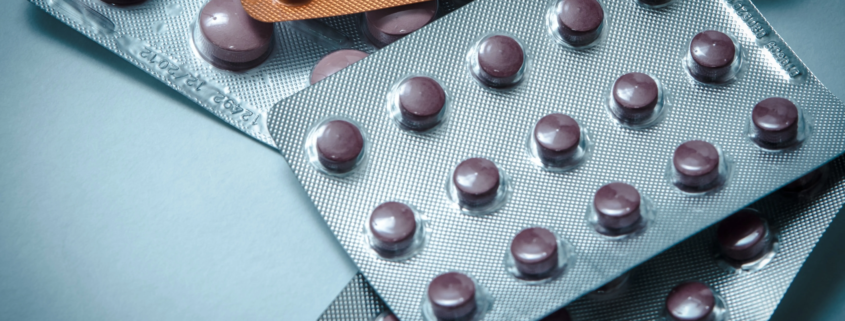Oral vs. Topical Minoxidil: Which One’s Better for Hair Loss?
Introduction
Have you ever heard of Minoxidil? It’s a medicine that lots of people use to grow hair and increase hair density. But guess what? There are two different ways to use it: as a pill you take by mouth or as a liquid or foam you put on your head as a topical formulation. Each way has its own good and not-so-good points, making them important for both male and female pattern hair loss treatments. In this article, we’ll check out how Minoxidil works, see how each form of Minoxidil is used, talk about the pros and cons, and find out about side effects and how well they work. By the end, you’ll have a good idea of which one might be right for you.
Getting to Know Minoxidil: A Quick Look
Minoxidil is a special medicine that helps stimulate hair growth, increasing hair density. It does this by making blood vessels bigger and letting more blood flow through them. It was first made to treat high blood pressure, but then they found out it also helps people grow more hair.
When it comes to treating hair loss, Minoxidil can help both men and women. It comes in different types, like pills or liquids, to make your hair grow back and get thicker. But what’s the secret behind Minoxidil? Let’s dive into the science of this cool medicine.
The Science Behind Minoxidil
Minoxidil works by opening up special channels in hair roots. This makes hair grow longer and thicker, contributing to increased hair density. It can even make the hair roots bigger, so hair grows better.
When applied topically, minoxidil penetrates the scalp and reaches the hair follicles. By making blood vessels in your head wider, it lets more blood get to the hair roots, bringing lots of good stuff like oxygen and food. This makes sleeping hair roots wake up and start growing new hair.
Minoxidil is great at keeping hair follicles in the “grow” phase for longer. This is when hair is getting longer. So, Minoxidil helps hair follicles stay in this phase longer, making hair thicker and longer.
Oral vs. Topical Minoxidil
Minoxidil comes in two main forms: oral and topical. Both types have their good sides and things to think about.
Oral Minoxidil is a pill that you take, and it goes into your blood. Doctors can give you stronger doses of this kind. They usually use it for people with really bad hair loss or when the liquid Minoxidil doesn’t work. But be careful, because taking it by mouth might cause more side effects than the liquid kind.
On the other hand, topical minoxidil is applied directly to the scalp in the form of a liquid or foam. You can buy it at the store in different strengths. Many people like this kind because it’s easy to use and it works right where you put it. It’s like a targeted attack on the places that need help. When you pick between oral and topical Minoxidil, you should think about how bad your hair loss is, what you like, and if you have any health problems. Asking a doctor can help you figure out which one’s best for you.
Oral Minoxidil
Oral Minoxidil has been around for a while and doctors usually give it to people with really bad hair loss or when the liquid Minoxidil doesn’t help.
How Oral Minoxidil Works
Oral Minoxidil goes into your blood and helps hair roots get more blood. This makes hair grow all over your head. It’s great for people who have hair loss in lots of places.
But how does it do that? Minoxidil is like a superhero that makes blood vessels wider. When they’re wider, they can carry more blood to your hair follicles, increasing hair density. This gives them the good stuff they need to grow hair.
Also, Minoxidil can make the “grow” phase of hair roots last longer. This is when hair is getting longer. So, Minoxidil helps hair roots stay in this phase for a long time, making hair grow better.
Good and Not-So-Good Sides of Oral Minoxidil
Just like any medicine, there are good and not-so-good things about oral Minoxidil.
Good Things:
1. It might work better for androgenetic alopecia: Oral Minoxidil is stronger than the liquid kind, and it’s better for people with a lot of hair loss.
2. It helps hair grow all over your head: Unlike the liquid kind, which you put on just some places, oral Minoxidil helps hair grow everywhere.
Not-So-Good Things:
1. There could be more side effects: Because it goes into your blood, oral Minoxidil might have more side effects than the liquid kind. These side effects can include low blood pressure, holding onto water in your body, and a faster heart rate. It’s important to talk to a doctor before using it to make sure it’s safe for you.
2. You need a prescription: You can’t buy oral Minoxidil at the store; you need a doctor’s prescription. This is because it’s stronger and doctors need to watch out for side effects.
In short, oral Minoxidil can help people with really bad hair loss, but it might have more side effects. Before trying it, talk to a doctor to see if it’s right for you.
Taking a Closer Look at Topical Minoxidil
Topical Minoxidil is one of the most common hair loss treatments. You can buy it in different strengths at the store, and you put it on your head.
How Topical Minoxidil Works?
When you put the liquid Minoxidil on your head, it goes through your skin and gets to your hair follicles. It’s like a superhero that makes blood vessels in your head bigger, bringing more blood to your hair follicles. This helps hair grow and keeps your hair roots happy. You usually put it on your head twice a day to get the best results.
The Good and Not-So-Good Things about Topical Minoxidil
Advantages of topical minoxidil:
1. Easy to use.
2. Available over the counter.
3. Lower risk of systemic side effects.
Not-So-Good Things:
1. Less effective for severe hair loss.
2. Localized treatment area.
3. Scalp irritation.
Side Effects and Staying Safe
Like any medicine, Minoxidil can have side effects. Before you start using it, make sure you know about these possible issues.
Side Effects of Oral Minoxidil
Oral Minoxidil might cause things like low blood pressure, holding onto water, and a faster heartbeat. These problems might happen more often when you take higher doses. So, talk to a doctor before you start using it to see if it’s safe for you.
Side Effects of Topical Minoxidil
Most people can use topical Minoxidil without any issues, but sometimes it might cause things like scalp irritation or dry scalp. These problems are usually not too bad and don’t last long. If you have any big issues, stop using it and see a doctor.
How Well It Works
How well Minoxidil works can be different for each person. It depends on things like how long you’ve had hair loss, how bad it is, your genes, if you keep using it like you should, and your health. It’s a good idea to talk about all these things with a doctor to see what’s best for you.
Conclusion
Both oral and topical Minoxidil can make your hair grow, especially in the context of hair density and hair loss treatments. Oral Minoxidil is for folks with really bad hair loss, while topical Minoxidil is better for less severe cases. What’s right for you depends on your situation, so talk to a doctor before you decide. No matter which one you choose, Minoxidil can help you get back your hair and fight hair loss.
Learn about the HairLife DNA test.





